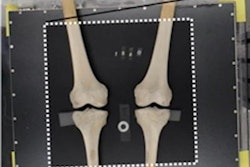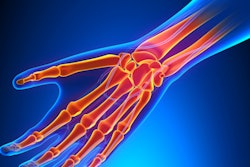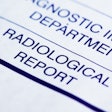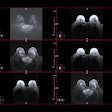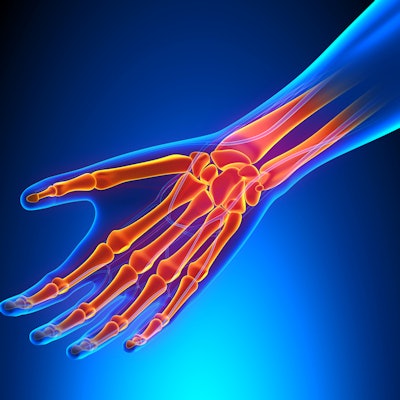
An artificial intelligence (AI) algorithm can estimate bone age in children and adolescents from analysis of a 3D hand MRI exam with a very high level of accuracy, according to research published online July 31 in Medical Image Analysis. What's more, it can also perform well on wrist radiographs.
After training several different types of AI algorithms, a team of researchers led by Darko Štern, PhD, of the Ludwig Boltzmann Institute for Clinical Forensic Imaging in Graz, Austria, found that the best algorithm could estimate bone age on 3D hand MRIs within an average of 0.37 years.
"Our thorough evaluation of different machine-learning methods revealed that our [deep convolutional neural network (CNN)]–based regression approach achieves the new state-of-the-art accuracy compared with previous MRI-based methods," the authors wrote. "Moreover, when adapted for 2D images, the same method is in line with state-of-the-art methods developed specifically for x-ray data."
Radiologists have traditionally estimated bone age by assessing the level of ossification on x-rays of the hand and then comparing the results to a reference atlas. However, this approach exposes children and adolescents to ionizing radiation and is prone to high interrater and intrarater variability, according to the researchers.
MRI has been proposed as an ionizing radiation-free alternative, but all MRI-based methods so far still rely on a radiologist's estimation of physical maturation and are therefore still subject to the same interreader and intrareader variability, the authors said.
As a result, the researchers sought to develop fully automatic age estimation methods using 3D MRI studies of the hand. They trained a number of models based on different architectures -- random forests and deep CNNs -- to estimate bone age using a dataset of 328 MR images collected at their institution.
The best-performing model -- a deep CNN -- yielded a mean absolute error of 0.37 ± 0.51 years in subjects 18 years of age and younger. The researchers then sought to validate their results by adapting the deep CNN for use on x-ray images. They trained and evaluated the model using all 835 images of subjects older than 10 years from the publicly available Digital Hand Atlas Database.
The algorithm yielded a mean absolute error of 0.57 ± 0.61 years on the x-ray images, a result that may be considered in line with state-of-the-art automatic age estimation methods, according to the researchers. They noted that while their method was accurate in subjects up to 18 years old, its performance is biologically limited for the legally important classification of whether a subject is a minor or an adult.
"Recent works indicate that combining estimations from complementary anatomical sites could extend the age estimation to the legally relevant age range up to 25 years," the authors wrote. "In future work, we will investigate the capabilities for automated multifactorial MRI-based age estimation to improve the classification accuracy."




